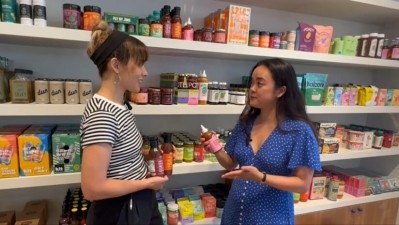Startup Spotlight
An unexpected strategy for startups to land retail shelf space: Saying ‘no’
At the Summer Fancy Food Show in New York City, first-time exhibitor Tamarind Heads garnered more attention than the startup expected – and could keep up with – when it won the Specialty Food Association sofi Gold Award for BBQ. But as Co-Founder Brittney Lim explains, when the team stopped chasing every lead and focused only on the ones that made the most strategic sense were they able to successfully land their first major retail launch and move the business forward.
“Having a sofi award was huge. You have the nod from the industry experts and foodies who said, ‘Wow, this is a really high quality product. It stands out.’ And so, I think that definitely gave us a leg up because it is so recognized … and has opened a lot of doors for us from the get-go,” Lim told FoodNavigator-USA.
At the same time, she said, it contributed to the “somewhat overwhelming and stressful … pressure to go into every store retailer that offered us a spot,” she acknowledged.
She explained after the Summer Fancy Food Show the small team behind Tamarind Heads spent a lot of time responding to emails, calling back distributors, retailers and others interested in stocking the company’s barbeque sauce.
“That took away a lot of our time and energy for a long time from focusing on more strategic items. … So, what we had to do is take a pause and say, ‘OK, we have some of these opportunities that come through door, but we have a lot of other things in mind. [We need to] chase after what actually aligns with” building the brand and our core values, she added.
Saying no to certain opportunities made “everything … so much more manageable,” and reduced the risk of “making silly mistakes” because the team was no longer pulled in a “million different directions” and could “focus on the 100 that make the most sense,” Lim said.
How to say ‘no’ without fully closing a door
Part of what makes saying ‘no’ hard is a fear-of-missing-out or of permanently closing a door that may not be a strategic fit now but could be in the future. Lim said she addressed this by saying, ‘no for now,’ and being honest about why and if or when a yes may be in the future.
She explained that some opportunities sounded great, but required the company to take on or outsource more than it could handle or afford at the moment. When the company explained its constraints and emphasized it wanted the best possible outcome from both Tamarind Heads and the retailer or distributor, most people understood and were willing to wait for the company to be in a better position before moving forward.
While those instances became a “no for now,” there were times when Lim said the company need to say no more firmly – but again, she said, the company explained why so that those seeking partnerships understood its logic.
For example, the products stocked at one potential retail partner tended to sell for less than Tamarind Heads could afford to price its products. Lim explained that her barbeque sauce might not sell as well when on the shelf where a price gap was so large and apparent and so needed to decline until a time when the startup could offer a product at a lower price point – either because it could leverage economies of scale or offer a different package option.
How to identify the ‘right fit’ in a retail partner
The ”right fit” for Tamarind Heads’ tamarind fruit-based barbeque sauce was Central Market in Texas, which Lim described as willing to take a chance on a new company, promotes global flavors, caters to a more diverse consumer base and draws in consumers who can afford more premium priced products.
She explained that Tamarind Heads barbeque sauce is unique in that it uses tamarind fruit as its base, rather than tomatoes and vinegar, and that this allowed it to tap into the macro trend of consumers wanting global flavors and resonate with second generation Americans whose families hail from cultures where tamarind is more prevalent.
As such, she said, she wanted a retailer that caters to consumers who want more global flavors or who might already be familiar with tamarind based on their eating patterns at home.
She also wanted a retailer that prioritizes “clean” products and whose consumers are willing to pay a premium for this attribute. She explained Tamarind Heads uses only five ingredients and skips the concentrates and pastes that other brands might use.
“We are really excited to be launching in nine Central Market stores coming this late fall through winter … and then going into next year, I think that we are going to continue to look to expand to other grocers that have sort of a similar feel to Central Market. Folks that carry a lot of global, interesting flavors for people to try,” and which cater to consumers who want to be a “little bit more creative in the their kitchen, but do not necessarily want to spent hours making something super, super fancy or do not have time to do that.”





















